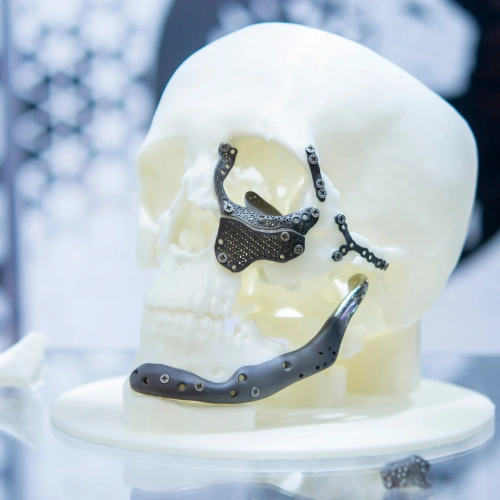Medical Stainless Steel vs Titanium: A Comparison of Two Key Materials in Healthcare
In the healthcare industry, the choice of material for medical devices is critical to ensuring the safety, functionality, and longevity of implants, surgical instruments, and other medical components. Two of the most widely used materials in medical device manufacturing are medical-grade stainless steel and titanium. Both metals have proven their worth in medical applications, but they each offer distinct advantages depending on the specific requirements of the device. This article compares medical stainless steel and titanium, highlighting their properties, benefits, limitations, and the factors that guide material selection in healthcare.

What is Medical Stainless Steel?
Medical stainless steel is a corrosion-resistant alloy composed primarily of iron, carbon, and chromium, with the addition of other elements like nickel and molybdenum. This alloy is particularly well-suited for medical applications due to its strength, resistance to corrosion, and biocompatibility.
Composition and Types of Medical Stainless Steel
Medical stainless steel comes in several grades, with 316L being one of the most commonly used types in healthcare. This grade contains molybdenum, which enhances its resistance to corrosion and ensures that it can withstand the harsh environments inside the human body. Other common types include 304. which is slightly less resistant but still widely used for non-implantable surgical instruments.
Properties of Medical Stainless Steel
Stainless steel is known for its exceptional mechanical strength and durability, which make it ideal for a variety of medical applications, from surgical tools to implants. It is highly resistant to wear and tear, making it durable enough for the rigors of surgery and patient use. Stainless steel is also relatively easy to fabricate, which allows manufacturers to create complex shapes for surgical instruments and implants.
Applications in Medical Devices
Medical stainless steel is used in a wide range of applications, such as surgical instruments (scalpels, forceps), orthopedic implants (plates, screws), dental implants, and medical device components that require sterilization. Its proven track record in the medical field is one of the reasons it continues to be a popular choice.
What is Titanium in Medical Applications?
Titanium is a naturally occurring metal known for its remarkable combination of light weight, strength, and resistance to corrosion. These characteristics make it particularly suited for high-performance medical applications.
Composition and Types of Titanium Alloys
Titanium used in medical devices is typically alloyed with other metals such as aluminum and vanadium to enhance its properties. The most common alloy in medical applications is Ti-6Al-4V (Grade 5), which combines titanium with 6% aluminum and 4% vanadium. This alloy offers superior strength and corrosion resistance, making it ideal for long-term implants and prosthetics.
Properties of Titanium
Titanium stands out for its high strength-to-weight ratio, meaning that it is incredibly strong yet much lighter than many other metals, including stainless steel. Titanium is also highly corrosion-resistant, even in the presence of bodily fluids, making it suitable for implants that are in contact with human tissue. Additionally, titanium is biocompatible, meaning it is unlikely to cause an adverse reaction in the body.
Applications in Medical Devices
Titanium is used in a variety of critical applications in the medical field, particularly in implantable devices. Examples include joint replacements (hip and knee), pacemaker components, dental implants, and bone fixation devices. Its light weight and strength make it especially suitable for weight-bearing implants and long-term applications where durability is essential.
Key Differences Between Medical Stainless Steel and Titanium
While both stainless steel and titanium have distinct advantages, their differences play a crucial role in material selection for medical devices. Understanding these differences can help determine which material is best suited for specific medical applications.
Strength and Durability
Both materials are known for their strength, but titanium is typically stronger and more durable relative to its density. It has a higher tensile strength, which makes it ideal for load-bearing applications such as joint replacements. On the other hand, stainless steel is slightly more rigid and can withstand high stress in applications like surgical instruments.
Corrosion Resistance
Titanium has a superior resistance to corrosion compared to stainless steel. While stainless steel is resistant to corrosion in most situations, it can be susceptible to damage when exposed to certain bodily fluids or harsh environments. Titanium, however, can withstand corrosion even in acidic environments, making it a top choice for long-term implants.
Biocompatibility
Both materials are biocompatible, meaning they are generally safe for implantation in the human body. However, titanium has a slight edge in this category, as it is less likely to cause allergic reactions or tissue irritation. Stainless steel, while safe, contains nickel and other elements that can occasionally trigger allergies in sensitive patients.
Weight and Density
Titanium is much lighter than stainless steel, which can be a significant advantage for implants, especially in weight-sensitive applications like joint replacements. The lower density of titanium helps reduce strain on the body, improving comfort for the patient. Stainless steel, being denser, may add more weight to medical devices, which can be a drawback in certain applications.
Advantages and Disadvantages of Medical Stainless Steel
Medical stainless steel offers several key advantages, but it also has limitations that can make titanium a better option in certain scenarios.
Advantages
Cost-Effectiveness: Stainless steel is generally more affordable than titanium, making it a cost-effective choice for a variety of medical applications.
Ease of Manufacturing: Stainless steel is easier to fabricate and form into complex shapes, making it ideal for mass production of surgical tools and instruments.
Proven Reliability: With decades of use in the medical field, stainless steel has a well-established track record for performance and safety.
Disadvantages
Weight: Stainless steel is heavier than titanium, which can be a disadvantage in weight-bearing implants.
Corrosion Risk: While stainless steel resists corrosion, it is not as durable as titanium in harsh bodily environments, which can affect the longevity of implants.
Allergic Reactions: Some patients may experience allergic reactions to nickel or other elements in stainless steel alloys.
Advantages and Disadvantages of Titanium in Medical Applications
Titanium offers exceptional benefits but also comes with certain trade-offs that should be considered when selecting materials for medical devices.
Advantages
Lightweight and Strong: Titanium’s high strength-to-weight ratio makes it ideal for implants that need to be both strong and light.
Superior Corrosion Resistance: Titanium’s resistance to corrosion in bodily fluids ensures long-term durability, especially in implants that will be in the body for many years.
Biocompatibility: Titanium is highly biocompatible, reducing the risk of rejection and complications in patients.
Disadvantages
Higher Cost: Titanium is significantly more expensive than stainless steel, which can increase the cost of medical devices.
Manufacturing Challenges: Titanium is more difficult to machine and fabricate, making it more expensive and time-consuming to produce.
Reduced Malleability: Titanium is less malleable than stainless steel, which can make it harder to work with in some medical device applications.
Cost Considerations in Choosing Between Stainless Steel and Titanium
When selecting between stainless steel and titanium for medical devices, cost is an important consideration, but it must be weighed alongside the material’s performance and long-term benefits.
Cost of Raw Materials
Titanium is more expensive than stainless steel due to its rarity and the complexity of extracting and refining it. Stainless steel, being more abundant and easier to process, is generally more affordable.
Cost of Manufacturing
Titanium’s higher cost extends to manufacturing, as it requires specialized equipment and techniques. Stainless steel, in contrast, is easier to work with and can be produced more quickly and cheaply.
Long-Term Value
While titanium may have a higher upfront cost, its superior durability, biocompatibility, and corrosion resistance may lead to lower long-term healthcare costs, especially in applications where the device is intended for long-term implantation.
Both medical stainless steel and titanium offer significant advantages for medical applications, but they each excel in different areas. Stainless steel’s affordability, ease of fabrication, and proven reliability make it ideal for a variety of surgical tools and temporary implants. Titanium, with its superior corrosion resistance, biocompatibility, and strength-to-weight ratio, is often the material of choice for long-term implants and high-performance applications. Ultimately, the decision between these two materials should be based on the specific requirements of the medical device and the patient’s needs.
Ready to purchase stainless steel? Contact us today for a quote or o speak with a specialist.We provide high quality stainless steel to your specific needs.
